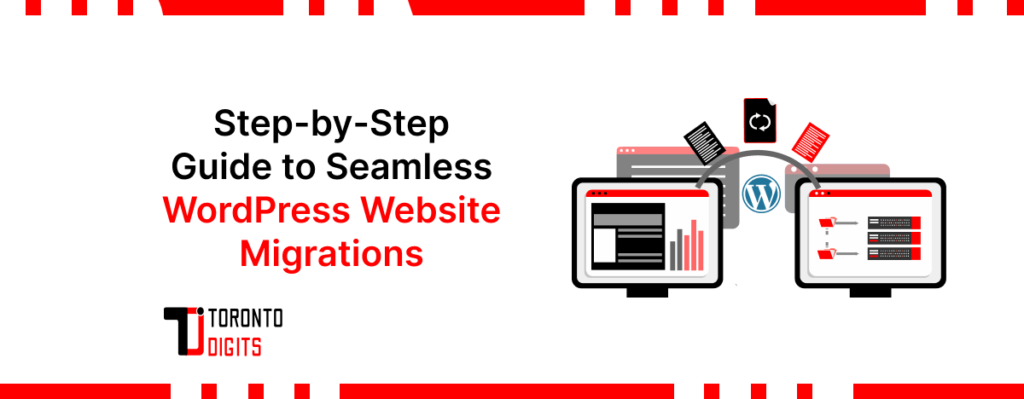Migrating a WordPress website, whether it’s a single site or part of a multisite migration, can feel overwhelming. Whether you’re switching hosts, changing domains, or both, following a structured approach ensures a smooth transition with minimal downtime or data loss. This guide outlines key steps including pre-migration backups, environment setup, and essential post-migration tracking.
Step 1: Preparation
Backup Your Website
Before touching a single file, create pre-migration backups of everything—your WordPress database, themes, plugins, media files, and custom configurations. Use trusted plugins like UpdraftPlus, BackupBuddy, or Jetpack to make this process efficient and secure. These backups act as a safety net in case anything goes wrong.
Choose a New Hosting Provider
If you’re migrating to a new host, research and select a provider that meets your needs in terms of performance, customer support, and scalability. Ensure the new host supports WordPress and offers easy migration solutions or support.
Step 2: Set Up Your New Hosting Environment
Install WordPress
Install WordPress on your new hosting account. Many hosts offer a one-click installation process. If not, you can manually install WordPress by downloading the latest version from WordPress.org and following their installation guide.
Temporary Domain
When retaining your existing domain but changing hosts, using a temporary URL lets you configure and test your site on the new host without affecting the live version. This is especially useful during multisite migrations, where multiple sub-sites must be validated individually.
Step 3: Migrate Your Website
Manual Migration
- Transfer Files: Using an FTP client (like FileZilla), connect to your old host, download your WordPress files, and then upload them to the new host.
- Migrate Database: Export your WordPress database from the old host (via phpMyAdmin or a similar tool), create a new database on the new host, and import your data.
- wp-config.php: Update the
wp-config.phpfile on the new host with the new database name, user, and password.
Plugin-Assisted Migration
For a simpler process, use a migration plugin like Duplicator, All-in-One WP Migration, or Migrate Guru. These plugins will create a copy of your site (including the database) that you can upload to your new hosting environment, often handling adjustments like URL changes automatically.
Step 4: Update DNS Settings
Once your site is live on the new host, don’t stop there—focus on maintenance post-migration and detailed post-migration tracking. After your site is set up and working correctly on the new host (using the temporary URL for verification), it’s time to update your Domain Name System (DNS) settings. This process involves changing the nameservers or A records to point to the new hosting provider. The exact steps depend on where your domain is registered, but you’ll typically:
- Log in to your domain registrar’s control panel.
- Navigate to your domain’s DNS settings.
- Update the nameservers or A records to the new hosting provider’s values.
DNS changes can take anywhere from a few hours to 48 hours to propagate worldwide, during which your site may be intermittently accessible at both the old and new hosts.
Also Read: Ultimate Guide to WordPress Backup and Disaster Recovery
Step 5: Final Checks and Configuration
Test Your Site
Once the DNS changes have propagated, thoroughly test your website on the new host. Take note of what worked and what didn’t. Analyze after migration insights such as traffic shifts, SEO ranking changes, and error logs. This feedback loop is invaluable for future migrations or scaling projects.
Update URLs
If your domain has changed, you’ll need to update internal links and references to the new domain. You can use a plugin like Better Search Replace for this task, which allows you to bulk-update URLs in your WordPress database.
Reconfigure Email
If your email was hosted with your previous hosting provider, you’d need to reconfigure your email settings to work with your new host or a third-party email service like Google Workspace or Microsoft 365.
Step 6: Post-Migration Tasks
After successfully migrating your site, consider the following:
- Monitor your site’s performance and adjust hosting settings as necessary.
- Implement 301 redirects if you’ve changed domains, to preserve search engine rankings.
- Notify your users if there are noticeable changes or if any downtime is expected during the DNS propagation period.
Conclusion
Whether you’re migrating a single WordPress site or managing a complex multisite migration, following these steps—starting with strong pre-migration backups and ending with actionable after migration insights—can help ensure everything goes smoothly. With the right tools and mindset, a WordPress migration doesn’t have to be stressful—it can be strategic. Need expert help with a tricky migration? Our team is here to support you at every step.




